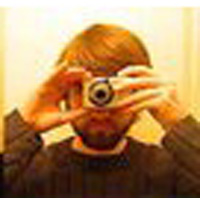
Meet Narziss in 2010 – Mommie was even Christian Schwartz's personal Judge's Choice.
Hubert Jocham's typefaces have that little extra that sets them apart, a distinctive flavour, a twist that often make them unusual and surprising. In many of my discussions with Hubert, it became clear that what I regard as a quirk in his designs, he considers plain and conventional. I like to compare his stance with indie record shops. Whereas in mainstream shops albums by The Notwist are to be found in the Alternative section, indie shops have them in the Pop section, Justin freakin' Bieber is conspicuously absent, and the music in their Alternative section is genuinely innovative and challenging. It all boils down to adapting one's expectations and taking into account the context in which the work is produced and used. This makes what he thinks are his more "experimental" designs truly intriguing, and his approach to type design refreshing. Needless to say I prefer to buy my albums in indie shops.

This headline in Spencerian handwriting, designed by Hubert Jocham for Edward Leida from W-magazine, New York, is inspired by the work of Tony Di Spigna.
As I wrote in the introduction until recently your work was mostly unknown to the larger audience. You were something like a typographer's well kept secret; your typefaces had an air of exclusivity that kept art directors who did know you ahead of "the masses". Do you have an explanation for this?
H U B E R T J O C H A M| "Well, you hit the nail right on the head. This was something that used to preoccupy me. I am acquainted with loads of people in the business – designers, art directors, typographers, and so on – and I can't complain about work. However the typographic scene, or whatever you want to call it, didn't really know me. With tongue firmly planted in cheek I can now say that for some reason nothing really happened to make me "famous" (laughs). For example I have this friend I collaborated with for long time. A couple of years ago he asked me to do a joint presentation at TYPO Berlin 2004 – Schrift about the importance of the typography in logo design. When I mentioned at the beginning of our talk that I am a type designer as well, I noticed that the audience really saw me as the brand man. This anecdote still makes me smile, because it illustrated how unfortunately my PR seemed to work for me (or should I say "against me"?)."
But recently this has improved? More people see you as a type designer?
H U B E R T J O C H A M| "In a way, yes. This has changed since I won those two awards from the Type Designers Club of New York TDC2 competition. The only remaining problem is that Mommie and Narziss are both headline faces, and both quite ornamental. I have the impression the general public now sees me as a designer of display type, and that I can only do that. I am counting on versatile type systems like Voice and Verse to challenge that assumption."


The Bally branding project was done without a branding agency. Boris Bencic – the former art director of Frank magazine in London – took Hubert Jocham on board for the redesign of the logotype, the visual identity, the branding manual, and the corporate typeface.
What do you do most – branding or type design?
H U B E R T J O C H A M| "I work for magazines, designing body type and headline fonts; for branding agencies, designing logotypes for corporate and product branding; and certain typefaces I create simply because I like designing type. Perhaps half of the time I spend doing packaging brand design. Agencies like Futurebrand, Interbrand or The Brand Union (formerly Enterprise) hire me to fine-tune or redesign a logo or brand where I gradually make it more modern and explore different options. This ranges from only a minor change to sometimes a totally new brand. I usually join the agency team, and collaborate on the development of the logo and the design of the basic elements. About a quarter of my time I design typefaces for magazines plus with some luck every now and then a corporate typeface. The rest is spent on self-initiated type designs."
"My first experiences with typography were in metal, when I enrolled an apprenticeship in typesetting after school. It's only later on during my graphic design studies in Augsburg (Germany) and Preston (England) that I came to realise how fortunate and beneficial this experience with lead type was. The other defining influence was "Kursiv – Die kursiven Druckschriften der Renaissance", my degree project on the history of italic type in the Renaissance. Because the relationship between roman and italic is essential to understanding the ductus, this proved to be an excellent foundation for my subsequent ventures in type design."
"Only after I graduated did I really start to draw type while working for design and advertising agencies during the daytime. I have always designed fonts since then. The reason why I wanted to have a second area of work was to play the instrument as well, instead of just building it. By using type professionally as a graphic designer and art director you get to better understand what the type market could use. Actually it took quite a while before I started selling my fonts to other foundries, because there always was a client who commissioned work or asked for something special. As for the typefaces I designed for myself, I simply developed them until I was happy with how they worked, and then I left them for something new. Only fairly recently did I decide to build all those concepts into families. The sole reason for some of them having been works in progress for so long is that I work alone."
Logo for Bea Bitzer
I suppose you get a lot of work by referrals. What kind of people usually hire you, and for what kind of assignments?
H U B E R T J O C H A M| "The people I got to know in the branding agencies are art directors and creative directors, because I worked in those companies as well. It is essential to collaborate on projects. When people like what you do they will recommend you to others in the business. After a while you notice how small this world is. The magazine business works in a similar way, with as main difference that credits in magazines are much more important than I initially thought. Many people contact you because they found your name in the colophon of a publication. Sometimes those two areas meet, for example when a magazine art director is asked to do a corporate design, and then I am invited to join the project, to design a custom typeface or work on the logo."
"For branding work I don't work on a license basis. I can understand that a company wants to own their corporate design. We negotiate a budget and that's it. When I design a custom typeface I have no real system. It is always a mixture of how much work is it for me, how much money would I want for it, how much does a similar typeface cost, how much do I feel the client is willing to pay? Sometimes we may draw up a contract, yet most of the time I am fine if we simply agree on the terms of a project."

Logo for the now defunct Hertie, a widely known retail store chain in Germany.
Tell me more about your type design work. When you design new typefaces, are these the result of an inner exploration, a search for new forms, or do you usually work the other way around, starting from a specific assignment, finding a solution to a specific set of problems?
H U B E R T J O C H A M| "Like most designers I am always looking to create something new and original. I am quite fortunate to have those two areas to work in – branding and type design. I manage to make a living with the design of brands and some commissioned typefaces every now and then. This means that when I design typefaces I can do pretty much whatever I want. The market is never very important at this stage."
"Frequently I start on a typeface just to question a rule, and to prove it can be broken. In these cases I always try out numerous variations in my search for a system that will do the trick. I discovered that very often it works. On the other hand I sometimes try to take a step backwards and create very simple and useful typefaces, eschewing any forms that are too eccentric. And it also has happened that I simply wanted to design an alternative to an existing concept, like my take on an industrial German typeface similar to DIN. I think a designer must be something like an actor, playing very diverse roles, and trying to be as good as possible in each and every one of them. Personally I am not too much into inner exploration; I don't think there is that much to find."
Do you sketch the conventional way, or do you design directly in the computer?
H U B E R T J O C H A M| "Only for my display faces do I still sketch. Voice and Verse were drawn directly on the computer screen, so i have no sketches at all. I realise this is a bit of a shame for articles like this one, because there are no drawings or intermediary versions I can show you. I wish I documented my creative process better, but usually I work so fast towards the final goal that I just forget to do it. I always start with the Regular weight in roman and italic, then I do the lightest and boldest weight. I rely on automated interpolation for all the intermediary weights. Instead of adapting and fine-tuning those individual instances, I work on the extremes until they and the interpolated weights are perfect for my taste."

Some examples of magazine work by Hubert Jocham – magazine logos for Details, Emotion, and Frank, as well as custom type design for Details.

Since February 2010 FontShop has become exclusive reseller of the Voice and Verse sans/serif type systems. Like he sometimes does Hubert Jocham sent me finished test versions of Voice Serif for feedback as early as January 2006. Initially Hubert had difficulties to believe me when I told him I discerned Eric Gill references in the design, specifically Joanna. He eventually had to concede as Martin Farran Lee – the former art director of Arena in London – told him that he too saw a hint Gill in some weights of the typeface. The super family appeared in Stephen Coles' list of most worthy releases for Our Favorite Typefaces of 2007, more than a year later. Although this perplexed me a little, back then it somehow made sense. Hubert used to be very reluctant to tell you solid release dates for his typefaces. As he considered everything he designs as perpetually "work in progress" he could only tell the dates he started his typefaces. His designs were finished only for as long as he didn't find anything to add or improve upon anymore. Nowadays he works in different stages. A serif or a sans needs to have at least a standard set, with weights ranging from Regular to Ultrabold – sometimes a Light too if it helps. However for display faces that depends, as a script for example can be only one single font. Now Hubert plans to gradually expand his type families to Pro sets with fully integrated OpenType features. However without Greek nor Cyrillic yet, because that is scheduled for a later date.
Voice & Voice Serif

Voice Regular and Italic
Voice Serif Regular and Italic
Voice – a type system consisting of sans and serif variants – is surprisingly conventional (in the positive sense of the word) and versatile. What was the idea behind this design?
H U B E R T J O C H A M| "As I often work in corporate branding and magazine typography I designed Voice to be a sans serif that works for both applications and more. I drew the sans first, directly on the screen. In comparison to most of my typefaces that tend to be fairly expressive, I wanted Voice to be simple effective and easy to use. Normally I try to find a strong character when I start on a new typeface, but with Voice I avoided this on purpose. I took a step back, stayed humble, and served the process of visual communication."
"I wanted Voice to look good in a wide range of sizes, and still work fine in narrow columns, with an extensive range of weights. Those are the basic criteria for effective typography that I could distinguish in all my corporate branding projects. You don't always need all the weights but it helps to have many available. This allows the designer to choose the appropriate weights from that wide range. In bigger sizes Voice comes across as clear and self confident, and in smaller sizes it works well for extended reading of body copy. It was quite difficult to get a grip on the design because it is somewhat in between styles and classifications. For example the stress, the stroke endings, the lowercase 'a' and 'g' are quite old style. The proportions are very classic (modern) to facilitate spacing. The letterforms are more open than those found in Helvetica."

The stroke endings in Voice help define the character of the typeface.

The character shapes of Voice create optical connections between successive letters.
"There's another typeface that also influenced the design. I borrowed the concept for the lowercase 'c' from Franklin Gothic, to give the character more body and again to improve spacing. I remember I spent a long time deciding about the openness of the lower case. The stroke endings of 'c', 'a', and 'e' play a crucial role in the design. It took me a long time to get them right, because these endings open or close the space to the character next to it. For example I wanted to have some kind of optical connection between the 'e' and the 'n', which gives the lowercase a nice structure."
"Because I drew Voice Serif after the sans serif it has classicist proportions, with a lower x-height and longer ascenders. It works as a serif companion for all Voice variants, even TeleVoice, and still has all the advantages of Voice (the sans)."
Overview of the weights in Voice.
Verse Serif & Verse Sans
Verse Serif Regular and Italic

Verse Sans Regular and Italic
Verse is also squarely aimed at the publishing and corporate market, yet it is a much more lyrical typeface, a brush serif with hints of calligraphy. What was the inspiration for this design?
H U B E R T J O C H A M| "In 2006 the art director of Emotion, a women's psychology magazine, asked me to design a text face for them. Before actually landing the job I already started working on a serif. I wanted it to be feminine yet still clear and modern. There is an interesting tension between the floral round elements on the one hand, and the angular corners on the other hand. In the Verse Serif lowercase the square bottom serifs contrast nicely with the brush-like top serifs, and capitals like the 'C', 'G', and 'S' have brush-like finials instead of serifs at the ends of the strokes. I wanted these two extremes to work well together in the composition, so all the other elements had to be harmonised."

Contrast between the floral elements (green) and the angular corners (blue) in Verse.
"The proportions needed to serve magazine requests. The ascenders and descenders are short enough to work well in narrow columns, but long enough to be noticed in small sizes. Here I worked the other way around – upon finishing Verse Serif I removed the serifs and decreased the contrast a little for the sans serif version. Yet it still has sufficient thick-and-thin modulation to retain that brush feeling. By the way the calligraphic aspect of the design is a simulation, something that was planned and designed, but never actually written. And the design is very strict in its straight elements."
Overview of the weights in Verse.







